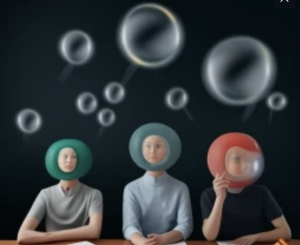I grew up going to the circus. As a little girl, it felt like a place of innocent fun and joy. I believed that circus animals were also having fun as they did their amazing tricks, and of course being treated with the kindness and compassion that they deserved. I also believed that their handlers loved them, as they certainly seemed to when they patted and pet them for their good behavior. I assumed that the animals enjoyed doing their work and were well-rewarded for it, receiving unimaginable rewards for being so talented at their jobs. I believed all this, but then I grew up.
As an adult, I learned what actually goes on behind the scenes of the circus, specifically, the profound suffering of those very animals that I believed were so happy and excited to be part of my entertainment. When I stopped assuming all was well in the back tents (not the tents I could see) I discovered the cruelty and abuse that goes into making this day of “innocent fun.” With Ringling Brothers swinging through my hometown right now, I feel compelled to enlighten those who, like me, did not know better, and naturally assumed the best.
In case you didn’t know, wild animals don’t naturally do handstands, balance on each other’s backs, juggle beach balls, dance across planks, or any of the other tricks that they perform for us in the circus. The way the trainers get the animals to perform these tricks is not with unimaginable rewards, but rather with extreme and consistent punishment, some of it violent, all of it cruel. The elephants are beaten with metal rods, pierced with bull hooks on their sensitive bodily areas, eyes and face, shocked with electric prods and assaulted with blowtorches; bears have their noses broken and paws burned so they will walk on their hind legs. Monkeys and other animals have their teeth knocked out as well as being routinely drugged to make them more manageable.
Furthermore, the animals, when not in public sight, are kept in far too small cages, some so small as to prevent them from being able to stand up properly or turn around, and certainly too small to get the exercise they need. They are systematically deprived of adequate food and water and exposed to extreme heat and cold, which many animals are not biologically equipped to tolerate. Animals who are used to walking miles and miles each day are made to stand still for up to 24 hours at a time, chained like bicycles. So too, species like elephants and monkeys, who are supremely social, are often kept in cages alone, in solitary confinement, which is utterly detrimental to their happiness. And of course, animals repeatedly mistreated often become aggressive and erratic. For this they are then punished with even more extreme measures and the cycle of abuse continues.
Elephants in particular have many similar qualities to humans, in the way that they take care of their young and form emotional attachments to their families. In the circus, elephants are forced to have babies as early as 8-yrs-old, which is emotionally and biologically equivalent to an 8-yr-old human having a child. When the baby is born, it is immediately removed from the mother elephant. In order for this profoundly painful removal to happen, the mother elephant must be chained on all four legs (not just the usual 3) to keep her from attacking her handlers. The next cruel and rigorous process then begins, to break the baby’s spirit, as she is not only denied access to her mother, but also forced to assume the role of an imprisoned and powerless object for human entertainment. The practice of removing baby animals from their mothers before they are properly weaned, sometimes before they have even suckled with their mother, and then denying them contact with each other, is one of the most profoundly cruel techniques in the abuse of circus animals.
Most of us don’t know what happens to animals that have been enslaved by the human business of entertainment. It is not our fault that we don’t know. Everyone appears to be happy under the lights of the big top, humans and animals alike; the cotton candy tastes sweet, everyone is smiling and clapping, (including the seals) and we assume, understandably, that all is well. The circus is linked with childhood fun and a sense of joy; it is hard to believe and we certainly don’t want to believe that anything else could be true. But in truth, the animals in the circus are not well, and not having fun; what goes on in the circus, for the animals, is the antithesis of joy.
How is it that we can believe we have the right to misuse these magnificent and wise wild creatures for the purposes of entertainment and profit, without any consideration or empathy for their wellbeing? How is it that we believe it is okay to perpetrate such fierce unkindness on living spirits? Animals are sentient beings that experience pain, suffering, joy, fear, anger, warmth, safety, love, attachment and probably every other emotion that humans do. If nothing else, we should respect their dignity and treat them with the compassion that we wish for ourselves and those we love.
The next time we consider treating ourselves or our child to some joy under the big top, we should think about what our financial support of the circus means in a larger context, what behavior and ethics we’re really supporting with that ticket. We should consider those living creatures that are being exploited for our fun, those beings that have no voice to speak for themselves, and that have committed no crimes to warrant their punishment.
The next time we see an animal jump through a hoop of fire or perform any other ridiculous act, we should contemplate and imagine what had to happen to make that wild animal do something so counterintuitive to its nature. And maybe too, wonder where and how that animal might be spending the rest of the day and night when the performance we see is finished, and where the rest of its family is right now. Crazy though it might sound, we could expand beyond our own pleasure and include what that animal, the one doing tricks for us, might actually be experiencing. We can look past the three rings, beyond the sparkles and dazzling lights— to find out what is really true.
Most importantly, we should decide if we are okay with and want to support the cruelty that is being perpetrated on these living hostages, all so that we can have a few laughs. It is up to us, whether or not we are going to turn a blind eye to the suffering that the circus creates, to continue with our illusion of innocent joy and fun. Ultimately it is up to us, our choice whether or not we buy that ticket. I for one will choose to say “no.”


